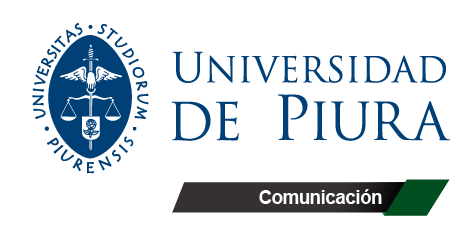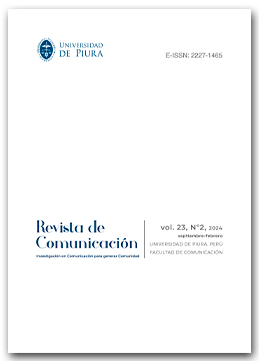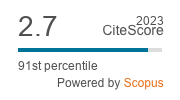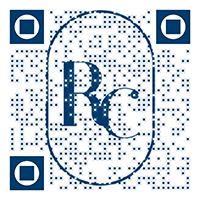Actitud y comportamiento del adolescente frente al influencer advertising sobre cuerpo y dieta en Perú
DOI:
https://doi.org/10.26441/RC23.2-2024-3605Palabras clave:
Influencer advertising, Publicidad, Medios sociales, Redes sociales, Menores de edad, Jóvenes, Adolescentes, Actitud, Comportamiento, PerúResumen
La temprana presencia del adolescente en redes sociales (RS) y su exposición prolongada al influencer advertising, táctica no invasiva enfocada en objetivos publicitarios a corto plazo que tiene como pilar de un sistema de publicidad digital al influencer, lo han colocado en situación de riesgo. La evidencia indica hibridación en la publicidad (Feijoo et al., 2021; Feijoo, et al., 2023; Suárez-Álvarez y Pastor-Rodríguez, 2023) y limitadas capacidades del adolescente para reconocer la publicidad si no está señalizada (Evans et al., 2017; Feijoo et al., 2021; Martins et al., 2023; Zozaya Durazo et al., 2022; Zozaya-Durazo y Sádaba-Chalezquer, 2022). Esto le impide activar una actitud crítica frente a la publicidad (Evans et al., 2017; Feijoo et al., 2021; Feijoo et al., 2023; Zozaya Durazo et al., 2022). Por eso, es esencial entender cómo interactúa, percibe y responde al influencer advertising en RS.
Este estudio busca conocer la respuesta del adolescente peruano de 11 a 17 años al influencer advertising sobre cuerpo y dieta en RS, mediante un método cuantitativo, aplicando una encuesta representativa a una muestra de 1020 adolescentes. Los resultados indican un volumen significativo de publicidad percibida, y se considera razonable (52,25%), creíble (45,91%), de confianza (45,50%) y ética (43,25%). Siendo la dimensión de líder y fuente de inspiración y motivación lo más valorado. La respuesta emocional es positiva y su actitud receptiva, pero menos dispuesta a interactuar. Por último, se confirma que las instrucciones y consejos inciden en la actitud a ver y leer el contenido y en el deseo, asimismo las frases motivacionales influyen en la intención a darle me gusta.
Métricas
Citas
Advertising Standards Authority, Competition and Markets Authority, & Committee of Advertising Practice. (2023). An Influencer’s Guide to making clear that ads are ads. https://www.asa.org.uk/resource/influencers-guide.html
Agustian, K., Hidayat, R., Zen, A., Sekarini, R. A., & Malik, A. J. (2023). The Influence of Influencer Marketing in Increasing Brand Awareness and Sales for SMEs. Technology and Society Perspectives (TACIT), 1(2), 68-78. https://doi.org/10.61100/tacit.v1i2.54 DOI: https://doi.org/10.61100/tacit.v1i2.54
Aho Williamson, D., Ceurvels, M., Cheung, M.-C., Droesch, B., Enberg, J., Fisher, B., Han, J., Jhun, J., McGranahan, N., & Jillian, R. (2019). Global Influencer Marketing 2019. https://iabperu.com/2019/08/20/global-influencer-marketing-2019/
Bajaña Marí, S., & García, A. M. (2023). Uso de redes sociales y factores de riesgo para el desarrollo de trastornos relacionados con la alimentación en España: una revisión sistemática. Atención Primaria, 55(11). https://doi.org/10.1016/j.aprim.2023.102708 DOI: https://doi.org/10.1016/j.aprim.2023.102708
Balaban, D. C., Mucundorfeanu, M., & Naderer, B. (2022). The role of trustworthiness in social media influencer advertising: Investigating users’ appreciation of advertising transparency and its effects. Communications, 47(3), 395-421. https://doi.org/10.1515/commun-2020-0053 DOI: https://doi.org/10.1515/commun-2020-0053
Cambronero-Saiz, B., Mayagoitia-Soria, A., & Feijoó Fernández, B. (2024). Influencer marketing and health repercussions: a literature review on the impact of influencers on eating behavior and body self-perception. International Journal of Internet Marketing and Advertising, 1-23. https://doi.org/10.1504/IJIMA.2024.10061318 DOI: https://doi.org/10.1504/IJIMA.2024.10061318
Charmaraman, L., Lynch, A. D., Richer, A. M., & Grossman, J. M. (2022). Associations of early social media initiation on digital behaviors and the moderating role of limiting use. Computers in Human Behavior, 127. https://doi.org/10.1016/j.chb.2021.107053 DOI: https://doi.org/10.1016/j.chb.2021.107053
Coates, A. E., Hardman, C. A., Halford, J. C. G., Christiansen, P., & Boyland, E. J. (2019a). Social media influencer marketing and children’s food intake: A randomized trial. Pediatrics, 143(4). https://doi.org/10.1542/peds.2018-2554 DOI: https://doi.org/10.1542/peds.2018-2554
Coates, A. E., Hardman, C. A., Halford, J. C. G., Christiansen, P., & Boyland, E. J. (2019b). The effect of influencer marketing of food and a “protective” advertising disclosure on children’s food intake. Pediatric Obesity, 14(10). https://doi.org/10.1111/ijpo.12540 DOI: https://doi.org/10.1111/ijpo.12540
Comscore. (2021). Panorama del escenario digital del Perú 2021. https://www.comscore.com/lat/Prensa-y-Eventos/Presentaciones-y-libros-blancos/2022/Panorama-del-escenario-digital-del-Peru-2021
Comscore. (2023). Digital Trends Latam 2023. https://www.comscore.com/lat/Prensa-y-Eventos/Presentaciones-y-libros-blancos/2023/Digital-Trends-LatAm-2023
Conde, R., & Casais, B. (2023). Micro, macro and mega-influencers on instagram: The power of persuasion via the parasocial relationship. Journal of Business Research, 158. https://doi.org/10.1016/j.jbusres.2023.113708 DOI: https://doi.org/10.1016/j.jbusres.2023.113708
Congreso de la República del Perú. (2013, mayo 17). Ley N°30021. Para la promoción de la alimentación saludable para niños, niñas y adolescentes. 1-3. https://www.gob.pe/institucion/congreso-de-la-republica/normas-legales/118470-30021
Congreso de la República del Perú. (2023, diciembre 6). Proyecto de Ley N°5434/2022-CR. 1-14. https://doi.org/10.2023/GL
De Jans, S., Spielvogel, I., Naderer, B., & Hudders, L. (2021a). Digital food marketing to children: How an influencer’s lifestyle can stimulate healthy food choices among children. Appetite, 162. https://doi.org/10.1016/j.appet.2021.105182
De Jans, S., Spielvogel, I., Naderer, B., & Hudders, L. (2021b). Digital food marketing to children: How an influencer’s lifestyle can stimulate healthy food choices among children. Appetite, 162. https://doi.org/10.1016/j.appet.2021.105182 DOI: https://doi.org/10.1016/j.appet.2021.105182
Diez-Canseco, F., & Saavedra-García, L. (2017). Social programs and reducing obesity in Peru: Reflections from the research. Revista Peruana de Medicina Experimental y Salud Publica, 34(1), 105-112. https://doi.org/10.17843/rpmesp.2017.341.2772 DOI: https://doi.org/10.17843/rpmesp.2017.341.2772
Du, Y., Rui, J. R., & Yu, N. (2023). How Parasocial Relationship and Influencer-Product Congruence Shape Audience’s Attitude Towards Product Placement in Online Videos: The Mediation Role of Reactance. Psychology Research and Behavior Management, 16, 1315-1329. https://doi.org/10.2147/PRBM.S406558 DOI: https://doi.org/10.2147/PRBM.S406558
Ekman, P. (1994). All emotions are basic. En P. Ekman & R. J. Davidson (Eds.), The nature of emotion (pp. 15-19). Oxford University Press.
Ekman, P., & Davidson, R. J. (Eds.). (1994). The nature of emotion: Fundamental questions. Oxford University Press.
Evans, N. J., Phua, J., Lim, J., & Jun, H. (2017). Disclosing Instagram Influencer Advertising: The Effects of Disclosure Language on Advertising Recognition, Attitudes, and Behavioral Intent. Journal of Interactive Advertising, 17(2), 138-149. https://doi.org/10.1080/15252019.2017.1366885 DOI: https://doi.org/10.1080/15252019.2017.1366885
Feijoo, B., Bugueño, S., Sádaba, C., & García-González, A. (2021). Parents’ and children’s perception on social media advertising. Comunicar, 29(67), 1-11. https://doi.org/10.3916/C67-2021-08 DOI: https://doi.org/10.3916/C67-2021-08
Feijoo, B., Cambronero-Saiz, B., & Miguel-San-emeterio, B. (2023). Body perception and frequency of exposure to advertising on social networks among adolescents. Profesional de la Informacion, 32(3). https://doi.org/10.3145/epi.2023.may.18 DOI: https://doi.org/10.3145/epi.2023.may.18
Feijoo, B., López-Martínez, A., & Núñez-Gómez, P. (2022). Body and diet as sales pitches: Spanish teenagers’ perceptions about influencers’ impact on ideal physical appearance. Profesional de la Informacion, 31(4). https://doi.org/10.3145/epi.2022.jul.12 DOI: https://doi.org/10.3145/epi.2022.jul.12
Feijoo, B., Pavez, I., & Benavides, C. (2023). Analysis of Chilean children’s perceptions of commercial content on TikTok: “I ate a commercial”. Revista Mediterranea de Comunicacion, 14(2), 272-282. https://doi.org/10.14198/MEDCOM.24250 DOI: https://doi.org/10.14198/MEDCOM.24250
Feijoo, B., & Sádaba, C. (2021). The relationship of chilean minors with brands and influencers on social networks. Sustainability (Switzerland), 13(5), 1-14. https://doi.org/10.3390/su13052822 DOI: https://doi.org/10.3390/su13052822
Feijoo, B., Zozaya Durazo, L., Cambronero Saiz, B., Mayagoitia, A., González, J. M., Sádaba, C., Núñez-Gómez, P., & Begoña, M. (2023). Digital Fit: influencia de las redes sociales en la alimentación y en el aspecto físico de los menores. En Revisa de Fundación MAPFRE. https://reunir.unir.net/handle/123456789/14827
Fernández-Gómez, E., Feijoo, B., & Morante Bonet, M. (2024). Training Concerns of Micro-influencers on Advertising and Marketing. Journal of Advertising Education, 0(0), 1-23. https://doi.org/10.1177/10980482241231267 DOI: https://doi.org/10.1177/10980482241231267
Gamito Gomez, R., Aristizabal Llorente, P., Vizcarra Morales, M. T., & León Hernández, I. (2020). Seguridad y protección digital de la infancia: retos de la escuela del siglo XXI. Educar, 56(1), 219-237. https://doi.org/10.5565/REV/EDUCAR.1113 DOI: https://doi.org/10.5565/rev/educar.1113
García Puertas, D. (2020). Influencia del uso de Instagram sobre la conducta alimentaria y trastornos emocionales. Revisión sistemática. Revista Española de Comunicación en Salud, 11(2), 244. https://doi.org/10.20318/recs.2020/5223 DOI: https://doi.org/10.20318/recs.2020/5223
Gross, J., Cui, Z., & von Wangenheim, F. (2023). How to Make Influencer Advertising Engaging on Instagram: Emotional Storytelling in Sponsored Posts. Journal of Interactive Advertising, 23(4), 388-408. https://doi.org/10.1080/15252019.2023.2211579 DOI: https://doi.org/10.1080/15252019.2023.2211579
IAB España. (2022). Estudio de redes sociales 2022. https://iabspain.es/estudio/estudio-de-redes-sociales-2022/
IAB Perú. (2022). Conexión LATAM. La evolución del consumidor digital latinoamericano. https://iabperu.com/2023/03/02/estudio-conexion-latam-peru-2/
IAB Perú. (2023a). Estudio de Inversión en Publicidad Digital. https://iabperu.com/2023/02/16/estudio-de-inversion-en-publicidad-digital-en-peru-2022/
IAB Perú. (2023b). Guía de Social Media. https://iabperu.com/2023/11/22/guia-de-social-media/
Indecopi. (2019). Guía de publicidad para influencers. http://hdl.handle.net/11724/7199
Indecopi. (2022, enero 13). El Indecopi recuerda a influencers peruanos que deben ser responsables con la difusión de la publicidad en sus redes sociales. 1-1. https://repositorio.indecopi.gob.pe/handle/11724/8628?show=full
Ipsos Perú. (2021). El Peruano Digital. https://www.ipsos.com/es-pe/peruano-digital
Ipsos Perú. (2023). Si no estás en redes sociales, estás en nada. https://www.ipsos.com/es-pe/si-no-estas-en-rrss-estas-en-na
Janssen, L., Schouten, A. P., & Croes, E. A. J. (2022). Influencer advertising on Instagram: product-influencer fit and number of followers affect advertising outcomes and influencer evaluations via credibility and identification. International Journal of Advertising, 41(1), 101-127. https://doi.org/10.1080/02650487.2021.1994205 DOI: https://doi.org/10.1080/02650487.2021.1994205
Kim, D. Y., & Kim, H. Y. (2021). Influencer advertising on social media: The multiple inference model on influencer-product congruence and sponsorship disclosure. Journal of Business Research, 130, 405-415. https://doi.org/10.1016/j.jbusres.2020.02.020 DOI: https://doi.org/10.1016/j.jbusres.2020.02.020
Lim, X. J., Mohd Radzol, A. R. bt, Cheah, J.-H. (Jacky), & Wong, M. W. (2017). The Impact of Social Media Influencers on Purchase Intention and the Mediation Effect of Customer Attitude. Asian Journal of Business Research, 7(2). https://doi.org/10.14707/ajbr.170035 DOI: https://doi.org/10.14707/ajbr.170035
Lin, H. C., Bruning, P. F., & Swarna, H. (2018). Using online opinion leaders to promote the hedonic and utilitarian value of products and services. Business Horizons, 61(3), 431-442. https://doi.org/10.1016/j.bushor.2018.01.010 DOI: https://doi.org/10.1016/j.bushor.2018.01.010
Lou, C. (2022). Social Media Influencers and Followers: Theorization of a Trans-Parasocial Relation and Explication of Its Implications for Influencer Advertising. Journal of Advertising, 51(1), 4-21. https://doi.org/10.1080/00913367.2021.1880345 DOI: https://doi.org/10.1080/00913367.2021.1880345
Lou, C., & Yuan, S. (2019). Influencer Marketing: How Message Value and Credibility Affect Consumer Trust of Branded Content on Social Media. Journal of Interactive Advertising, 19(1), 58-73. https://doi.org/10.1080/15252019.2018.1533501 DOI: https://doi.org/10.1080/15252019.2018.1533501
Lowe-Calverley, E., & Grieve, R. (2021). Do the metrics matter? An experimental investigation of Instagram influencer effects on mood and body dissatisfaction. Body Image, 36, 1-4. https://doi.org/10.1016/j.bodyim.2020.10.003 DOI: https://doi.org/10.1016/j.bodyim.2020.10.003
Lozano-Muñoz, N., Borrallo-Riego, & Guerra-Martín, M. D. (2022). Influencia de las redes sociales sobre la anorexia y la bulimia en las adolescentes: una revisión sistemática. Anales del Sistema Sanitario de Navarra, 45(2). https://doi.org/10.23938/ASSN.1009 DOI: https://doi.org/10.23938/ASSN.1009
Martins, A., Gavina, A., & Mendes de Silva, B. (2023). Native Advertising: New challenge for online consumers and the role of media and advertising literacy. Revista de comunicação, cultura e artes, 1-16. https://doi.org/https://doi.org/10.34623/acmp-2e37
Meyers, C. B. (2017). Social Media Influencers: A Lesson Plan for Teaching Digital Advertising Media Literacy. Advertising & Society Quarterly, 18(2). https://doi.org/10.1353/asr.2017.0018 DOI: https://doi.org/10.1353/asr.2017.0018
Milmo, D., y Skopeliti, C. (2021, agosto 18). Teenage girls, body image and Instagram’s «perfect storm». The Guardian, 1-1. https://www.theguardian.com/technology/2021/sep/18/teenage-girls-body-image-and-instagrams-perfect-storm
Ministerio de Salud. (2017, agosto 17). Manual de advertencias publicitarias del reglamento de la Ley N°30021, Ley de promoción de la alimentación saludable para niños, niñas y adolescentes. Diario Oficial El Peruano, 1-19. https://acortar.link/AzDad4
Núñez-Cansado, M., López-López, A., & Somarriba-Arechavala, N. (2021). Covert advertising by kidsfluencers: a methodological proposal applied to the case study of the ten youngest youtubers with most followers in Spain. Profesional de la Informacion, 30(2). https://doi.org/10.3145/epi.2021.mar.19 DOI: https://doi.org/10.3145/epi.2021.mar.19
Phua, J., Jin, S. V., & Kim, J. (Jay). (2017). Gratifications of using Facebook, Twitter, Instagram, or Snapchat to follow brands: The moderating effect of social comparison, trust, tie strength, and network homophily on brand identification, brand engagement, brand commitment, and membership intention. Telematics and Informatics, 34(1), 412-424. https://doi.org/10.1016/j.tele.2016.06.004 DOI: https://doi.org/10.1016/j.tele.2016.06.004
Pilgrim, K., & Bohnet-Joschko, S. (2019). Selling health and happiness how influencers communicate on Instagram about dieting and exercise: Mixed methods research. BMC Public Health, 19(1). https://doi.org/10.1186/s12889-019-7387-8 DOI: https://doi.org/10.1186/s12889-019-7387-8
Pomalima, R., Palpán, J., Caballero, J., & Cruz, V. (2016). Prevalencia de Riesgo de la Conducta Adictiva a Internet entre los adolescentes de Lima Metropolitana y Arequipa. https://www.fundacionmapfre.org/publicaciones/todas/prevalencia-riesgo-conducta-adictiva-internet/
Powell, J., & Pring, T. (2024). The impact of social media influencers on health outcomes: Systematic review. En Social Science and Medicine (Vol. 340). Elsevier Ltd. https://doi.org/10.1016/j.socscimed.2023.116472 DOI: https://doi.org/10.1016/j.socscimed.2023.116472
Presidencia de la República. (2010, septiembre 2). Ley N°29571. Código de protección y defensa del consumidor. Diario Oficial El Peruano, 1-98. https://www.gob.pe/institucion/indecopi/normas-legales/1244218-29571
Presidencia de La República de Perú. (2008, junio 25). Decreto Legislativo N°1044. Que aprueba la Ley de Represión de la Competencia Desleal. Diario Oficial El Peruano, 1-32. https://www.gob.pe/institucion/indecopi/normas-legales/2274760-1044
Presidencia de la República de Perú. (2017, junio 17). Decreto Supremo N°017-2017-SA. Que aprueba el reglamento de la Ley N°30021, Ley de promoción de la alimentación saludable. Diario Oficial El Peruano, 1-12. https://www.gob.pe/institucion/minsa/normas-legales/189343-017-2017-sa
Presidencia de la República de Perú. (2022, febrero 18). Decreto Legislativo N°1524. Por el cual se modifica el decreto legislativo N°943, ley del registro único de contribuyentes y otras normas vinculadas con dicho registro. Diario Oficial El Peruano, 1-4. https://busquedas.elperuano.pe/dispositivo/NL/2040462-2
Presidencia de la República del Perú. (2018, junio 21). Decreto Supremo N°012-2018-SA. Aprueban Manual de Advertencias Publicitarias en el marco de lo establecido en la Ley 30021, Ley de promoción de la alimentación saludable para niños, niñas y adolescentes, y su Reglamento aprobado por Decreto Supremo N°017-2017-SA. Diario Oficial El Peruano, 1-6. https://www.gob.pe/institucion/produce/normas-legales/185544-012-2018-sa
Pur Damayanti, C., Ninggar, D., & Sugiarto, C. (2024). The effect of influencer advertising on the intention to buy Wardah cosmetics in Indonesia. Innovative Marketing, 20(1), 88-100. https://doi.org/10.21511/im.20(1).2024.08 DOI: https://doi.org/10.21511/im.20(1).2024.08
Rosengren, S., & Campbell, C. (2021). Navigating the Future of Influencer Advertising: Consolidating What Is Known and Identifying New Research Directions. En Journal of Advertising (Vol. 50, Número 5, pp. 505-509). Routledge. https://doi.org/10.1080/00913367.2021.1984346 DOI: https://doi.org/10.1080/00913367.2021.1984346
Rundin, K., & Colliander, J. (2021). Multifaceted Influencers: Toward a New Typology for Influencer Roles in Advertising. Journal of Advertising, 50(5), 548-564. https://doi.org/10.1080/00913367.2021.1980471 DOI: https://doi.org/10.1080/00913367.2021.1980471
Salluca, M. Y., Valeriano, D. Y. A., Gutierrez, R. A., & Casa-Coila, M. D. (2022). Adicción a las redes sociales y la procrastinación académica en adolescentes peruanos en tiempos de coronavirus Covid-19. Revista Electronica Interuniversitaria de Formacion del Profesorado, 25(2), 129-143. https://doi.org/10.6018/reifop.513311 DOI: https://doi.org/10.6018/reifop.513311
Servicio Nacional del Consumidor de Chile. (2018). Estudio de publicidad online: el caso de la publicidad nativa. OECD. https://doi.org/10.1787/9789264255258-en DOI: https://doi.org/10.1787/9789264255258-en
Silva, M. J. de B., Farias, S. A. de, Grigg, M. H. K., & Barbosa, M. de L. de A. (2021). The body as a brand in social media: Analyzing Digital Fitness Influencers as Product Endorsers. Athenea Digital. Revista de pensamiento e investigación social, 21(1), 1-34. https://doi.org/10.5565/rev/athenea.2614 DOI: https://doi.org/10.5565/rev/athenea.2614
Suárez-Álvarez, R., & Pastor-Rodríguez, A. (2023). Influencer advertising on TikTok: advert formats and illicit product advertising. A study involving Germany, France, Spain and Italy. Communication and Society, 36(3), 175-191. https://doi.org/10.15581/003.36.3.175-191 DOI: https://doi.org/10.15581/003.36.3.175-191
Suárez-García, Z., & Álvarez-García, D. (2023). Uso de redes sociales en la preadolescencia: diferencias de género. Psychology, Society and Education, 15(1), 30-39. https://doi.org/10.21071/psye.v15i1.15277 DOI: https://doi.org/10.21071/pse.v15i1.15277
Tiggemann, M., & Anderberg, I. (2020). Muscles and bare chests on Instagram: The effect of Influencers’ fashion and fitspiration images on men’s body image. Body Image, 35, 237-244. https://doi.org/10.1016/j.bodyim.2020.10.001 DOI: https://doi.org/10.1016/j.bodyim.2020.10.001
Tsang, M. M., Ho, S.-C., & Liang, T.-P. (2004). Consumer Attitudes Toward Mobile Advertising: An Empirical Study. International Journal of Electronic Commerce, 8(3), 65-78. https://doi.org/10.1080/10864415.2004.11044301 DOI: https://doi.org/10.1080/10864415.2004.11044301
Um, N. (2023). Predictors Affecting Effects of Virtual Influencer Advertising among College Students. Sustainability, 15(8), 6388. https://doi.org/10.3390/su15086388 DOI: https://doi.org/10.3390/su15086388
UNICEF. (2017). Estado Mundial de la Infancia 2017: Niños en un Mundo Digital.
UNICEF España. (2021). ¿Qué opinan los niños, niñas y adolescentes? Resultados de la segunda edición del Barómetro de Opinión de Infancia y Adolescencia 2020 - 2021. https://www.unicef.es/publicacion/barometro-infancia-adolescencia/informe-2020-2021
UNICEF Perú. (2023). Análisis del panorama del sobrepeso y la obesidad infantil y adolescente en Perú: recomendaciones de políticas para enfrentarlos. https://acortar.link/pnfqiG
Van Dam, S., & Van Reijmersdal, E. A. (2019). Insights in adolescents’ advertising literacy, perceptions and responses regarding sponsored influencer videos and disclosures. Cyberpsychology, 13(2). https://doi.org/10.5817/CP2019-2-2 DOI: https://doi.org/10.5817/CP2019-2-2
van Reijmersdal, E. A., Rozendaal, E., Hudders, L., Vanwesenbeeck, I., Cauberghe, V., & van Berlo, Z. M. C. (2020). Effects of Disclosing Influencer Marketing in Videos: An Eye Tracking Study Among Children in Early Adolescence. Journal of Interactive Marketing, 49, 94-106. https://doi.org/10.1016/j.intmar.2019.09.001 DOI: https://doi.org/10.1016/j.intmar.2019.09.001
We Are Social, & Meltwater. (2023). Digital 2023: Perú. https://datareportal.com/reports/digital-2023-peru
Zozaya Durazo, L. D., Feijoo Fernández, B., & Sádaba Chalezquer, C. (2022). Análisis de la capacidad de menores en España para reconocer los contenidos comerciales publicados por influencers. Revista de Comunicacion, 21(2), 307-319. https://doi.org/10.26441/RC21.2-2022-A15 DOI: https://doi.org/10.26441/RC21.2-2022-A15
Zozaya-Durazo, L., Fernández, B. F., & Chalezquer, C. S. (2023). The role that influencers play in consumption decisions made by Spanish minors. Doxa Comunicacion, 2023(36), 401-413. https://doi.org/10.31921/doxacom.n36a1685 DOI: https://doi.org/10.31921/doxacom.n36a1685
Zozaya-Durazo, L., & Sádaba-Chalezquer, C. (2022). Disguising Commercial Intentions: Sponsorship Disclosure Practices of Mexican Instamoms. Media and Communication, 10(1), 124-135. https://doi.org/10.17645/mac.v10i1.4640 DOI: https://doi.org/10.17645/mac.v10i1.4640
Publicado
Cómo citar
Número
Sección
Licencia
Derechos de autor 2024 Revista de Comunicación

Esta obra está bajo una licencia internacional Creative Commons Atribución-NoComercial-SinDerivadas 4.0.











 Portal de Revistas de la Universidad de Piura.
Portal de Revistas de la Universidad de Piura.